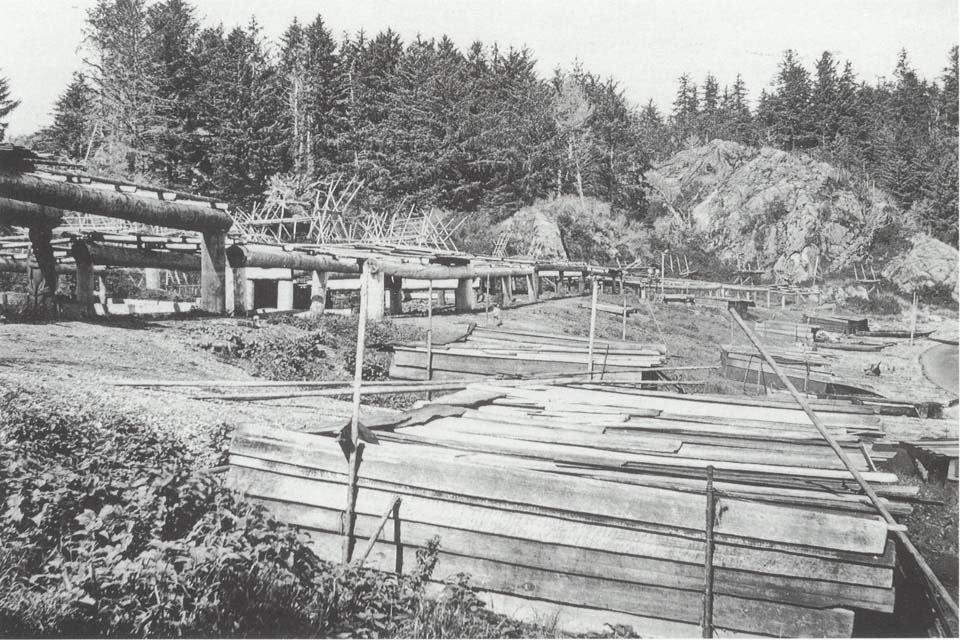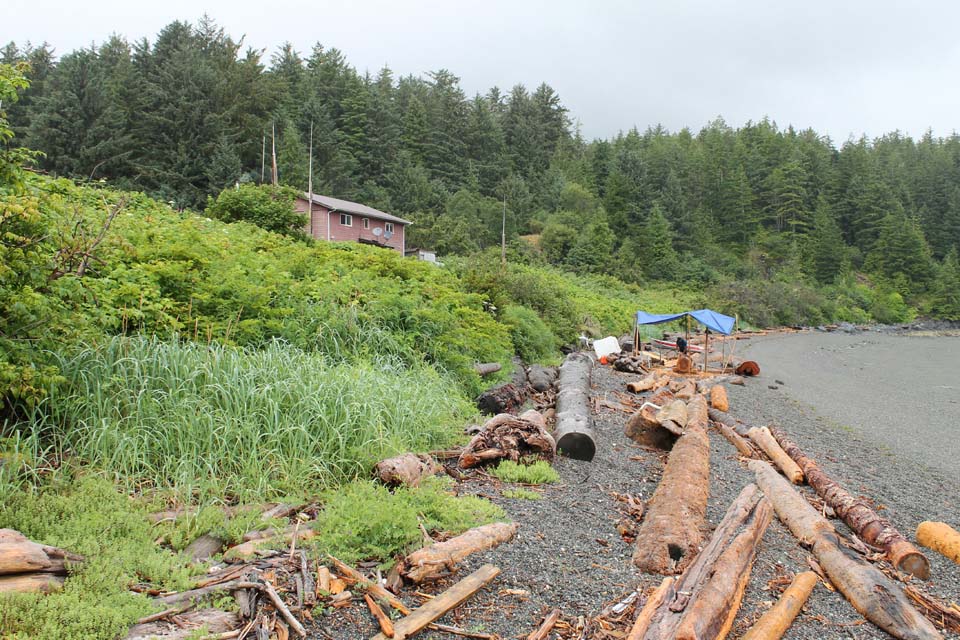The Annual Round of a West Coast Village
A unique combination of archaeology, history and traditional knowledge tell us a long-term story about the village of Yuquot on Nootka Sound. On March 22, 1803, the American fur trading ship Boston was attacked by Yuquot warriors, and 25 of her 27 crew were killed. Maquinna, a local chief, kept John R. Jewitt, and another survivor John Thompson as slaves for the next 2 years. Jewitt kept a diary of his experiences that he expanded into a book after his release and return to United States. He gives an intimate account of the annual round of the Maquinna’s Mowachaht people, a branch of the Nuu-chah-nulth First Nation. He describes their movements along the shores of Nootka Sound and Tahsis Inlet, and their techniques of whaling, fishing, hunting sea otters and bears, collecting berries, weaving clothing, and building canoes. In the early 1800s, over 500 people occupied Yuquot each year, starting in March. Jewitt describes the village as having about 20 houses built in a line, facing the cove:
“They vary not much in width, being usually from 36 to 40 feet wide, but are of very different lengths. That of the king, which is much the longest being about 150 feet, while the smallest, which contained only 2 families, do not exceed 40 feet in length.” 2
The houses were constructed of permanent posts and beams made from thick cedar logs. The siding and roofing was of wide cedar planks. Over the spring and summer the Mowacht lived on this idyllic site on the coast, hunting whales and seabirds and harvesting shellfish and herring spawn. In early September the villagers removed the roofing and siding from the houses, stacked the boards on large canoes, and moved about 30 km up the sound onto the mouth of the river at Tahsis. Jewitt comments that:
“To a European, such a removal exhibits a scene quite novel and strange: canoes piled up with boards and boxes, and filled with men, women, and children of all ranks and sizes, making the air resound with their cries and songs.”
Once at Tahsis, the boards were placed on existing house frames, and the village began to harvest the salmon run from the river, hunt bears and deer in the nearby mountains, and collect berries. For the next 2 months the winter’s provisions of salmon flesh was cured, and the salmon eggs collected in great tubs. Salal berries were pressed into great cakes of of “yama.” At the end of December:
All the tribe quitted Tahsis for Coopte, where they go to pass the remainder of the winter, and complete their fishing, taking everything with them in the same manner as at Nootka (Yuquot). We arrived at Coopte, which is about fifteen miles, and immediately set about covering the houses, which was soon completed…. the natives now began to take the herring and sprat in great quantities, and some salmon, and there was nothing but feasting from morning till night.”
Jewitt recorded that they then crossed the sound back to Yuquot at Friendly Cove on 25th of February, 1804, starting another year in their annual round. In the 1960s, archaeologists, working with the native peoples still living in the area, did several studies of these villages. They found that people have occupied Yuquot for over 5000 years. Analysis of faunal remains in middens (waste heaps) show, that similar to traditional knowledge and Jewitt’s account, shellfish, salmon, rockfish, and whales were commonly used. 3 In the decades since the 1960s, the age-long ecological cycle of the people, the sea, and the land has largely ended. Today, as would be expected, the Mowachaht, and most other Nuu-chah-nulth peoples have built road-accessible villages near Gold River, Port Alberni and other towns that have medical, school, and other services. 4
<Previous page Fur Trade Chapter Overview Next page>
Map and Footnotes
- House architecture is described at the Simon Fraser University website: http://www.sfu.ca/brc/art_architecture/nw_coast_architecture/nuu-chah-nulth-architecture.html ↩
- Jewitt, J.R., A Narrative of the Adventures and Sufferings of John R. Jewitt, 1815. Reprinted by Surrey: Heritage House, 2000 ↩
- McMillan, A. D., Since the Time of the Transformers: the Ancient Heritage of the Nuu-Chah-Nulth, Ditidaht, and Makah. Vancouver: UBC Press, 1999; Dewhirst, John. The Indigenous Archaeology of Yuquot, a Nootkan Outside Village. Ottawa :, National Historic Parks and Sites Branch, Parks Canada, 1980, Arima, E. and A. Hoover. The Whaling People of the West Coast of Vancouver Island and Cape Flattery. Victoria: Royal BC Museum. 2011 ↩
- Jones, L. Nootka Sound Explored: A Westcoast History. Ptarmigan Press: Campbell River, 1991 ↩


